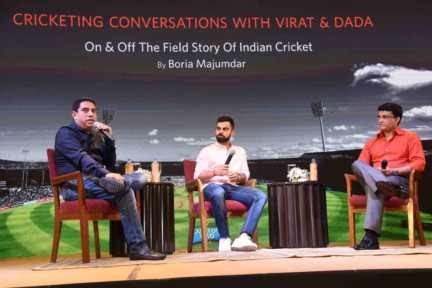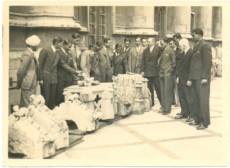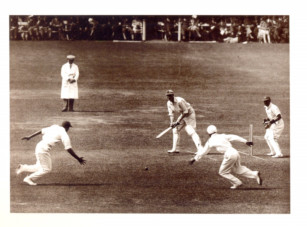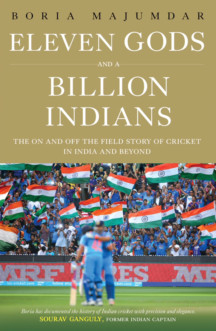
In 2004, when Boria Majumdar published his first book — Twenty Two Yards To Freedom: A Social History Of Indian Cricket — which assessed the role played by cricket in the lives of people across India, it was more of an academic offering, something that started off in October 2000 as a PhD thesis at the University of Oxford.
Majumdar, a young scholar, hugely enthusiastic with his first publication had then spent months at the libraries in London, Oxford, Cambridge, Chicago, New Delhi and Kolkata trying to document the history of Indian cricket between 1780 and 2003. The book created the first ripples in the publishing world for Majumdar. JA Mangan, Executive Director of the International Journal of the History of Sport called the book empirically sound, intelligently written and eminently readable.
Majumdar soon made a name for himself as India’s most influential sports commentator, journalist, author, editor and chronicler.
In his latest book, Eleven Gods and a Billion Indians: The On and Off the Field Story of Cricket in India and Beyond (Simon and Schuster), Majumdar has gone backstage to unravel the real story of cricket in India and beyond. He is more of an ace reporter here, a journalist with an uncanny sense of sniffing out the story without sensationalising it.
It has undoubtedly taken years for Majumdar to win the trust of the players in the dressing room to put together a narrative that reveals what goes on in equal measure on and off the field. As he says in the book, “to write an accurate historical account of Indian cricket one needs to first understand that it is not simply a history of what is happening on the field. That is only a part of it. What is played off the field is equally important and fascinating. These two stories which run concurrently on and off the field make Indian cricket what it is.”
The backstage, Majumdar admits, isn’t easy to access and that is the real strength of the book.
For any die-hard fan of Indian cricket, this book has all the drama that one can imagine. From the 2001 historic test match at the Eden Gardens when Harbhajan Singh got Glenn McGrath LBW with 100,000 people collectively erupting in joy to how Sourav Ganguly’s (the perfect Bengali gentleman) on-field aggression transformed Indian cricket forever, to the two famous captain spats — a young Virat Kohli versus Anil Kumble and Sourav Ganguly vs Greg Chappel to the behind the scenes of the 2013 IPL spot-fixing scandal (raising questions over the testimony and credibility of players, team owners and officials), and the suspension of Lalit Modi, there are a lot of people who have poured their heart out to the author in this book.
The behind the scene stories, the reportage, the personal interviews and the player reminiscences are definitely the high points of the book rather than the author’s accounts of on-field cricket that come across as nothing more than part of a timeline. As a reader, I was more curious to find out why the entire Indian team was denied a breakfast at their hotel on the day of the 2011 World Cup semi-final or what Ganguly felt in retrospect about taking off his shirt at the Lord’s balcony after India beat England in the Natwest Series final. To digress a bit, at the launch of Eleven Gods and a Billion Indians in Kolkata, Virat Kohli promised to walk shirtless around Oxford Street should India win the 2019 World Cup.
The other important thing about this book is a whole section devoted to priceless photographs of Indian cricket from history. There is a picture of CK Nayudu, India’s first Test captain along with the team during the country’s test debut at London in 1932.
It is in the epilogue of his book that Majumdar strikes a beautiful note where he takes a minute to bring Eleven Gods and a Billion Indians on to a more humane scale. He talks about a candy-seller at Eden Gardens in Kolkata who for years has stood at the match gates selling candy — she was “a link between the past and the present, a thin thread of continuity. From the time cricket was a mere sport to now when cricket is a billion dollar industry”. She tells Majumdar that the highest point in her life was getting to meet Ganguly and being photographed with the Kolkata Knight Rider players. It is here that Majumdar writes, and that is perhaps the most touching part of the book, is that people like her, the candy seller, are part of the billion Indians who make the eleven gods what they are. I am happy she is as much a part of Majumdar’s canvas as Sachin Tendulkar and Kohli.
Eleven Gods and a Billion Indians will be launched in Mumbai on April 23.












